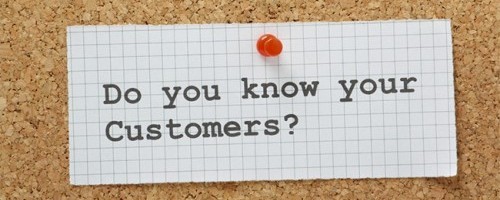Have you ever watched the show Criminal Minds? I used to somewhat regularly, until I realized watching a suspenseful crime show before bed wasn’t the best way to invoke dreams about sunshine and unicorns.
What does Criminal Minds have to do with buyer personas? If you haven’t seen the show, the investigators try to solve unfolding crimes by profiling suspects. By understanding previous criminals’ behavior, the characters are often lead closer to finding the perpetrator on the run and solving the case.
Just as profiling criminals can help net suspects, building personas can help you learn about your typical customers and their buying habits, netting you sales. Creating personas allows you to get inside the mind of your ideal customer (instead of a criminal, hopefully), which will help you learn how to best attract similar buyers.
As we talked about in our first post on buyer personas, you’ll want to define your ideal 2-3 customer types and focus on building those personas. Then you’ll be able to target those types with your marketing campaigns. Don’t try to be everything to everyone. If you do, you’ll end up spread thin and won’t be able to focus on what’s best for anyone.
In our last post, we went over how to conduct buyer persona interviews. Remember, just because you finished your initial round of interviews doesn’t mean you should stop there. Interview one or two clients per month to remain an expert and keep your finger on the pulse of any changing dynamics.
Writing winning personas
Start by creating a two-page profile for each persona. Each profile should contain the following:
- Title: Come up with a name for the person (Business Executive Eddie)
- Personal Profile: Tell us about Eddie.
- Pain Chain: What problems does Eddie face?
- Consideration: What makes Eddie consider your business?
- Choice: What makes Eddie ultimately choose your business?
- Avoidance: What Eddie might have to overcome before buying?
When writing up these sections, include strong quotes gleaned from the interviews you conducted. You might notice several customers said similar things. Use a quote from the person who said it best, but also note that more than one person said the same thing. Remember to include both the good and bad perceptions voiced to you in the interviews.
Leveraging your buyer personas
Now that you’ve written your personas, how do you turn that knowledge into a sale? There are many ways to get smarter about selling now that you know who your customers are and what their needs and stalling points are.
First off, take an inventory of your content to see which pain points of your personas are being addressed. Then see which pain points aren’t being addressed and create a plan to fill those holes with blog posts, emails, or through social media campaigns.
You’ll also want to take a look at your website – not through your eyes, but through the eyes of your buyer personas. Consider making design changes, conducting website optimization, and changing any wording or messaging on your site that isn’t geared toward your ideal customers and how they think.
You can also use your personas to determine:
- Ideal Editorial: What speaks to your personas — white papers, tip sheets? Give your customers more of what they seek most often.
- Target Communities: Which websites and online communities do your customers belong to? Strategize how you can be where they are going.
- Words for the Wise: Determine the keyword research info and industry terms your clients are using in searches. Target, test, and optimize use of those words and phrases.
- Getting a better handle on your clients through buyer personas can help you anticipate the needs of future customers. Just don’t go profiling any criminals in the process, or watching crime shows too close to bedtime!




